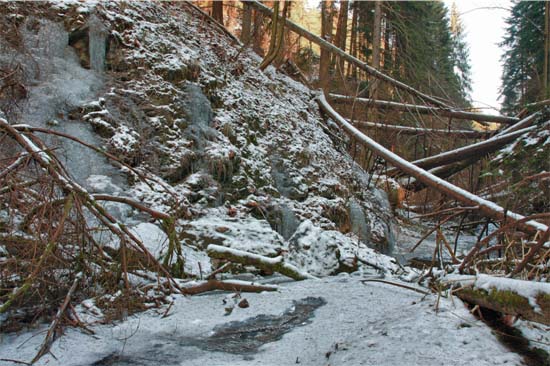Bomb Cyclone Hits Colorado w/ Power Outages
Snow and high-speed winds contribute to white out conditions in Colorado. Multiple power outages for days in result in Denver area.
Bomb Cyclone & Polar Vortex
A bomb cyclone, or a weather bomb, is a mid-altitude cyclone. When it occurs, the storm experiences an extreme drop in atmospheric pressure. It must drop by at least 24 millibars of pressure within a 24-hour period of time. This drop in atmospheric pressure is called cyclogenesis.
The National Oceanic and Atmospheric Administration (NOAH) maintains that a bomb cyclone occurs when a cold air mass collides with a warm air mass. A bomb cyclone can contain hurricane force winds, rain turning to freezing rain, heavy snow, and flooding as the snow melts.
A polar vortex is a mass of cold that is normally located over the Arctic region. The swirling air mass can move south during winter months. It is the boundary between cold polar air and warmer temperatures. When the polar vortex boundary weakens, the cold air migrates south. This weakened boundary can accompany the formation of the bomb cyclone. Once the cyclone passes, a cold weather snap can follow.
Bomb Cyclone Pummels Colorado with Blizzard Conditions
On Wednesday, March 13, 2019, Colorado was visited by a blizzard that progressed into a bomb cyclone style of front. The storm front extended from the Colorado front range mountains to the eastern plains. The eastern plains experienced the brunt of the storm. However, some mountain communities experienced heavy snow with lesser winds. Nederland, Co. received almost two feet of snow.
The storm in the Denver Metro area began with light rain changing into freezing rain, then to snow. The freezing rain coated all exposed surfaces with ice. Snow and heavy winds caused blizzard conditions, with winds reaching sustained hurricane force speeds in the eastern part of the state. Traveling anywhere east of Denver was impossible with interstates posting drifts of over 12 feet that completely covered vehicles. Rescue efforts for more than 350 stranded motorists were conducted. Travelers were transported to established buildings. In some cases, they were in their vehicles for more than 24 hours before the National Guard could facilitate rescue. Once rescued, they were transported to the nearest shelter. As power failed at shelters, travelers were moved to shelters that still had power.
Lengthy Power Outages & Heavy Winds
After the storm, Excel Power reported approximately 435,000 customers without power. Ice coated and snow covered all ground surfaces including trees and power lines. Snow added weight to the coated surfaces. The winds, often hurricane force, uprooted trees that fell on power lines. The video on this page helps demonstrates how the winds caused major issues to driivers and also shows a few examples of damages caused to the electrical infrastructure .
White-out conditions prohibited electrical repairs. Access to the affected areas is a major contributor to extended outage time. Travelers were urged to stay off the roads to allow for snow and vehicle removal. Excel is receiving out-of-state help in repairing the problems. There are still areas that do not have power. For more information on power outages and storm coverage in the Denver Metro area go to
Customers Without Power After Blizzard.
Surviving the Outage with an Industrial Power Generator
It is not uncommon for power to fail for brief amounts of time. Many failures last just seconds to a few minutes. It is out of the ordinary to lose power for more than four hours. Most businesses have a backup plan for these short-term outages. Facilities that do not have critical power needs and emergency generators may elect to shut down for the duration of the outage or consider renting a generator for tempoary power.
During the recent storm, we provided generator rentals to many businesses throughout the state. Businesses can suffer significant financial loss during thesedowntimes or rack up expense from rental fees if the duration is longer than a few days. For short durations rentals are great and sometimes your only option but for long term protection in many cases buying a generator is the most complete solution. We have an article that goes into detail on pros and cons of
renting vs. purchasing a generator.
Winter offers an extra layer of complication for longer term outages. Supply water and untreated water in sprinkler lines can freeze and burst as they thaw is just one type of damage that can be caused by the loss of heat because of power outages. An emergency power source can offer savings in downtime and damages suffered during a power outage. Emergency generators can supply power to any building or complex during a power outage. We sell both new and pre-owned diesel and natural gas generators. Pre-owned generators must pass a 31-point inspection prior to inventory placement. These generators have low hours on the meter and are ready for transportation to your site. We can rent generators for temporary needs.
Contact Us for all of your generator needs.
Diesel Blog Team
| 3/15/2019 12:00:30 PM
|
0 comments